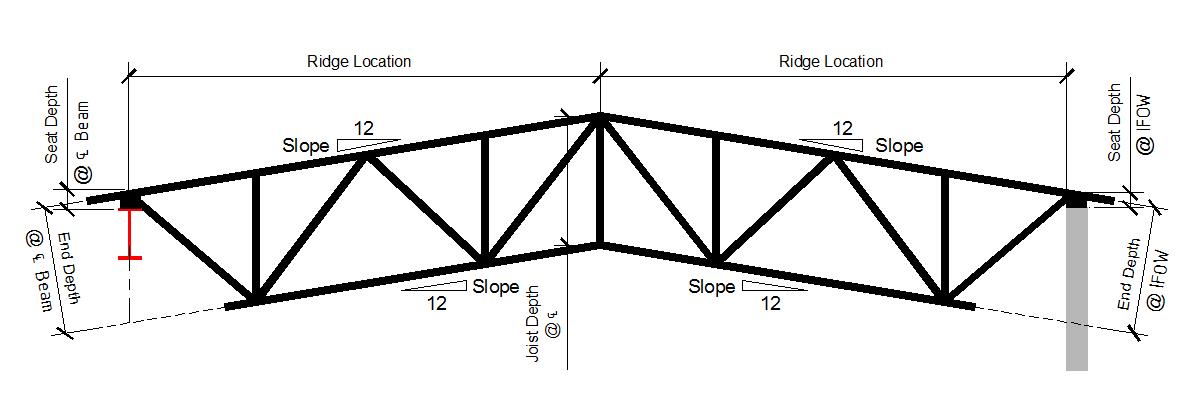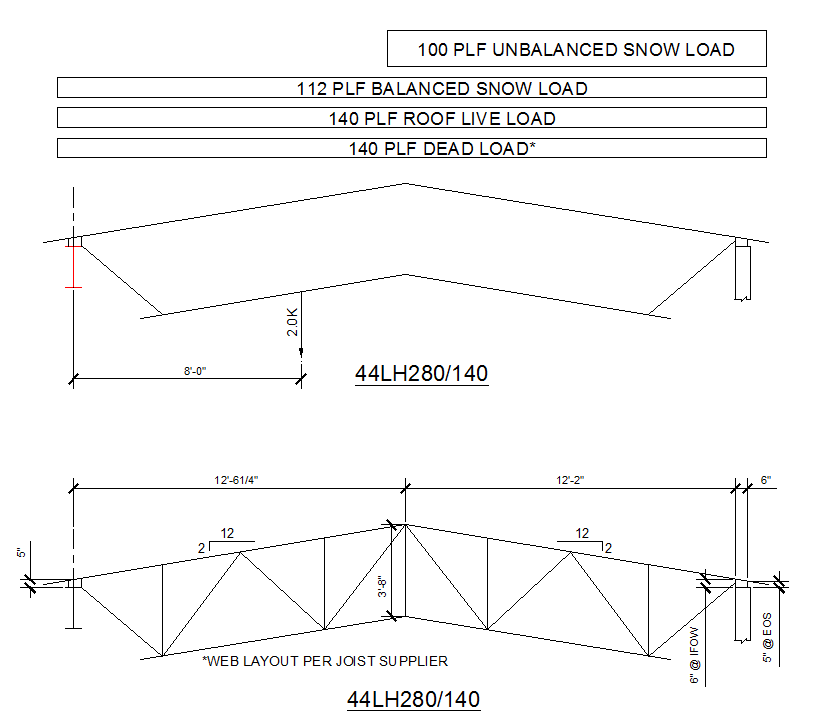Scissor-Type Joists Have Parallel Double-Pitched Top And Bottom Chords With The Ridge At The Centerline. The Pitch Is Constant From The Bearing Point To The Ridge And Is The Same On Each Side Of The Ridge With A Modified Warren Web Configuration

This product has significant effects on the analysis of the entire structure because of horizontal force effects at the support points. These forces and horizontal deflection limitations must be defined by the specifying design professional.
These joists have double-pitched top and bottom chords, which are the only variations from Vulcraft’s standard joist fabrication procedures.
Indicating the following required information on the structural drawings will expedite the pricing and detailing of the project, resulting in fewer questions on the joist approval drawings.
Due to the nature of a scissor chord joist, a horizontal thrust force and/or horizontal deflection will be experienced by the joist. Consequently, the bearing restraints must be considered to model the joist correctly. The design criteria resulting from the modeled bearing restraints must be noted so that they can be properly considered in the design of the joist. Contact Vulcraft with any questions.
BELOW IS AN EXAMPLE OF HOW TO EFFECTIVELY SPECIFY A SCISSOR JOIST PROFILE AND LOADING DIAGRAM. DIAGRAMS SUCH AS THESE SHOULD APPEAR ON THE STRUCTURAL DRAWINGS TO EXPEDITE THE DETAILING AND APPROVAL PROCESSES.
